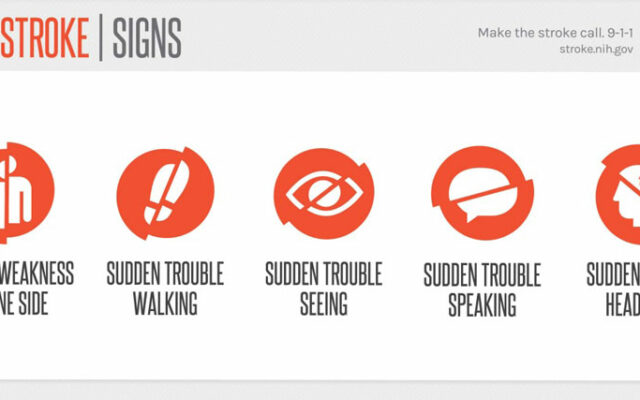Campaign trying to educate Iowans about strokes

DES MOINES — Stroke is one of the leading causes of death in Iowa, claiming about 1,400 lives a year, and a campaign is underway to teach Iowans about the symptoms and the importance of acting quickly.
Doctor Clinton Wright, with the National Institute of Neurological Disorders and Stroke, says in addition to being potentially deadly, strokes cause more serious long-term disabilities than any other disease.
“The most common type, which makes up about 75-80% of strokes, is when a blood vessel in the brain gets blocked,” Wright says. “That damages the tissue because it’s not getting blood anymore, not getting oxygen and the nutrients that it needs.”
A federal report says someone in the U.S. has a stroke every 40 seconds, while every four minutes, someone dies of stroke. Wright says it’s important that everyone knows the warning signs — and knows to respond right away. “Those symptoms are things like numbness or weakness of the face, arm or leg, especially when it happens on one side of the body,” Wright says. “Confusion that happens suddenly, trouble speaking or understanding speech, sudden loss of vision in one or both eyes or trouble seeing, sudden trouble walking, or dizziness or loss of balance or coordination.”
The risk of stroke varies with race and ethnicity, according to the CDC. The risk of having a stroke is nearly twice as high for blacks as for whites, and blacks have the highest stroke death rate. When treated quickly, Wright says surviving a stroke is possible and damage can be greatly reduced.
“Hypertension, diabetes, high cholesterol, certain lifestyle behaviors like exercise, not drinking too much alcohol, and quitting smoking,” Wright says, “all of those things can lower your risk of stroke and so that’s really important to get the word out about.”
The Iowa Department of Public Health says stroke is the sixth highest cause of death in Iowa, behind heart disease, cancer, chronic lower respiratory disease, Alzheimer’s disease, and unintentional injuries. For more information, visit www.stroke.nih.gov.




